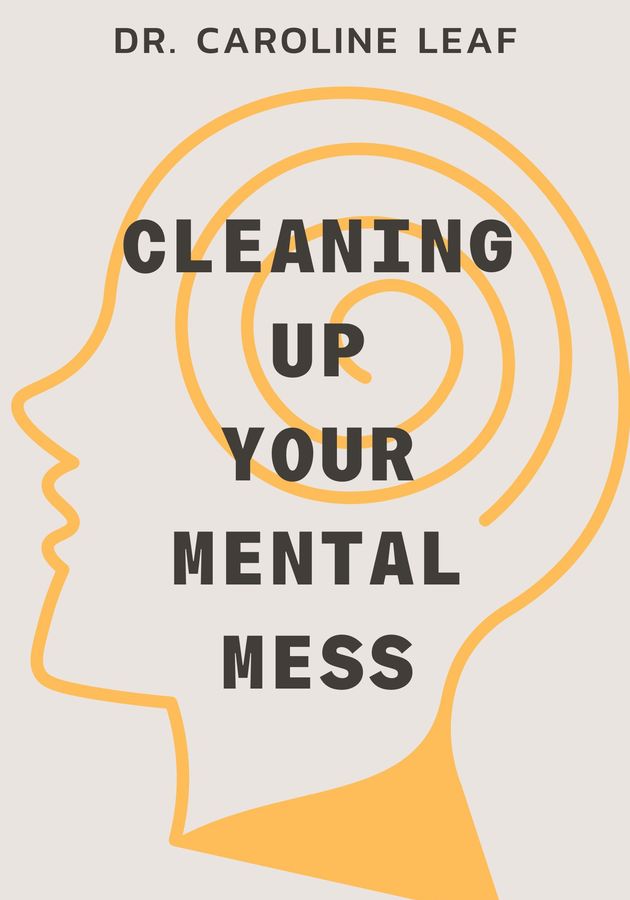Perfectionists know things can’t always work out perfectly
What do people mean when they say, ‘’I’m a perfectionist?” The colloquial definition of a perfectionist says that it is someone who wants everything to be perfect and gets upset when things are not. You probably think you are a perfectionist for always being punctual, having a clean and tidy house, or perfectly ironed shirts. However, things are not that simple. Perfectionists don't expect themselves or the world around them to be perfect. They are ‘’intelligent people who understand that everything can’t work out perfectly all the time. What they sometimes have trouble with is understanding why they still feel so disappointed by imperfection in the face of that intellectual concession,’’ Schafler writes.
Since society has the wrong notion about perfectionists, it builds a negative narrative around it, which is especially directed towards women. Think about it. Have you ever heard that the public pushed men, such as Steve Jobs or James Cameron, to curb their perfectionism and be ‘’perfectly imperfect?’’ But, what is with Martha Stewart, the most celebrated female perfectionist of our time, you might ask. She built an empire on her perfectionism, right? Yes, but her company centers only on archetypal homemaker interests, such as recipes, holiday entertainment, and weddings. As Schafler notes, ‘’Martha Stewart wears her perfectionism on her sleeve to roaring acclamation instead of being told to ‘be more balanced’ (i.e., temper her powerful drive) because her interests stay within the realm of what is acceptable for women to be publicly ambitious about.’’ According to Schafler, women are urged to repress their perfectionism because it is a powerful energy. Perhaps it is hard for you to think about it that way since it has tortured you in every area of your life - professional, romantic, artistic, spiritual, or physical. That was only because you did not treat it as a gift and, therefore, did not harness its power correctly.
Which type of perfectionist are you?
To start reaping the benefits of your perfectionism, you need to learn how to manage it, that is, become aware of ‘’the core impulse all perfectionists reflexively experience: noticing room for improvement and then consciously responding to that reflex instead of unconsciously reacting to it.’’ The first step to do that is learning about the five types of perfectionists and discovering which of the categories your perfectionism falls into.
1. Classic perfectionists. Everything about this type of perfectionist is clean and crisp, and that is because they are trying to offer others what they value most themselves - structure, consistency, predictability, an understanding of all the options so they can make informed choices, high standards, objectivity, and clarity through organization. You will easily recognize them since they openly state their dislike for the disorder.
Classic perfectionists are reliable and predictable but also unspontaneous and inflexible, as they don’t like unplanned events and have a hard time adjusting to schedule changes. As their default way of operating does not encourage collaboration, flexibility, or openness to external influence - qualities important for building connections - classic perfectionists might generate superficial and transactional relationships and, consequently, feel excluded, misunderstood, and unappreciated for all that they do.
2. Parisian perfectionists. Named after Parisian women famous for trying to present themselves as if they don’t make lots of effort to be beautiful when the truth is that they do a lot more work, Parisian perfectionists seem as if they don’t care if others don’t approve or like them. The truth is, however, different - they want to be liked and, therefore, have a strong desire to please others. Although this type of perfectionism is about being liked by others, on a deeper level, it is about wanting to create ideal connections. Therefore, they must learn how to articulate what they want, and rather than acting careless and indifferent, show others how much they care and ‘’embrace the people, places, and things that reciprocate their rich ability to connect.’’
3. Procrastinator perfectionists. As you can sense by the name, these types of perfectionists procrastinate. Why? They need perfect conditions before they make a move. A person who doesn’t want to leave a job they hate because they cannot perfectly line up a leaving date with the start date at another job is a good example of a procrastinator perfectionist. What adds up to their suffering of missing the opportunities is their failure to complete what they finally started because working on it requires taking a break, and taking a break requires restarting. ‘’The problem for these perfectionists is that starting a process taints it—now that it’s real, it can no longer be perfect. If something is perfect to them, it exists only in past memory or future ideal,’’ Schafler explains.
Unless they become aware of their impulses, procrastinator perfectionists become self-loathing and critical out of belief their problem is laziness, lack of discipline, and passion.
4. Messy perfectionists. Unlike classic perfectionists, these seem disorganized and messy. The truth is, they do organize, but only in a way they can understand. And, unlike procrastinator perfectionists, messy perfectionists love starting. Nevertheless, they usually fail to complete things as the excitement they had in the beginning does not persist during the whole process. A person who belongs to this type has multiple objectives they want to achieve (sometimes all at once) - get a certificate as a yoga teacher, apply for residency at Brooklyn Arts Council, decorate their apartment to rent it on Airbnb, and so on. They are hooked on the intoxication rush of a fresh start, but unless they manage their perfectionism, they cannot complete even one thing. If they do learn how to direct their enthusiasm into a single, intentional goal, ‘’messy perfectionists take over the world.’’
5. Intense perfectionists. When things don’t go their way, intense perfectionists are shocked. In other words, when there are breaks in efficiency, intense perfectionists break, too. It is because they, more than any other type, define their sense of success by the outcome of the process. When they don’t reach their goal or don’t reach it in the manner they planned, they consider themselves and the whole attempt a failure. Even a minor difference between what they achieved - $14,900 worth of sales commission, for instance - and what they planned to achieve - $ 15,000 - can make them unsatisfied. If not managed, their perfectionism can harm them and others since they are preoccupied with the goal and neglect the consequences of its pursuit. When they ‘’learn to identify and connect the process over the outcome, they experience more joy, connection, and interpersonal fulfillment—all without giving up their high standards,’’ Schafler writes.
Adaptive and maladaptive perfectionism
Schafler says perfectionism is ‘’a natural human impulse that we animate through our thoughts, behaviors, feelings, and interpersonal relationships. Persisting across time and cultures, the universal desire to actualize the ideals we imagine is as healthy as the impulse to love, to solve problems, to make art, to kiss, to tell stories, and so on.’’ To some perfectionists, this impulse feels like a burden as it disables them to thrive. To others, it is a ticket to a better life. Perfectionism, indeed, is a double-edged sword, that is, it manifests itself as adaptive (when you use it to your advantage in a healthy way), and maladaptive (the unhealthy manifestation of perfectionism). The important thing to note here is that the public discourse on perfectionism is negative because it is based only on maladaptive forms.
Unlike adaptive perfectionists, maladaptive ones do not feel enough, whole or secure - in other words, they are disconnected from their self-worth. Therefore, they operate from a ‘’mindset of deficit’’ and use their perfectionism to compensate for what they try to hide or miss. As Schafler clarifies, ‘’A maladaptive perfectionist wants to look their best because they feel bad inside. They’re desperate to look their best because maladaptive perfectionists feel so inadequate already that they feel like they better at least offer something.’’
No matter how each type of perfectionist expresses their maladaptive perfectionism, it all comes down to operating out of a belief that their self-worth depends on an external outcome. For Parisian perfectionists, for instance, maladaptive perfectionism manifests through pleasing people at the expense of neglecting their own needs. For procrastinator perfectionists, it looks like waiting too long and never doing it. Maladaptive messy perfectionists try to restore their self-worth by saying yes to everything while committing to nothing. If maladaptive, intense perfectionists believe achievement will make them whole and perfect. And finally, for classic perfectionists, maladaptive perfectionism looks like refusing to acknowledge that no matter how much predictability, exterior beauty, and organization they create, some moments are uncertain in a way you can’t control.
Stop overdoing it by restoring
If you are a perfectionist, you probably can’t easily relax while engaging in some harmless downtime such as watching TV, taking a nap, or scrolling social media. This is because you are calculating the ratio between the time you spend doing the activity and how restored you feel. ‘’If the ratio isn’t churning fast enough, you get the sense that you’re wasting your time and being unproductive; you start feeling more frustrated than you did before you started ‘relaxing,’’’ Schafler writes. If you hesitate to engage in activities in which you are passive out of a belief they are a waste of time, think of them as decompression, that is, passive relaxation. Yes, some people like to relax actively by, for instance, cooking, dancing, partying, singing, or painting. Nevertheless, active and passive relaxation don’t need to exclude one another - they are, in fact, both crucial for successful restoration, which is a two-phase process during which you empty yourself out (decompress) and fill yourself back in (active relaxation).
Perfectionists are not good at restoring. As a matter of fact, they are horrible at it simply because they experience restoration as failing. They also avoid it since it requires decompressing, an action particularly challenging for perfectionists because they thrive on pressure. However, unless they accept that restoration is essential and learn to enjoy doing nothing, perfectionists don’t make progress.
When restored, Parisian perfectionists come to understand that their inherent need is not to get others to like them but to connect with them. To messy perfectionists, restoration brings the realization that they don’t follow through because they are trying to avoid loss. Restored procrastinator perfectionists realize that they don’t want the start to be perfect, but faith that they will be okay even if they fail. With the help of restoration, classic perfectionists realize they don’t thrive to perfect order or organization but to function and beauty. And finally, restored intense perfectionists come to realize that it’s not that they need the outcome to be perfect - it’s that they want to matter - to others and themselves.
Final Notes
Perfectionists can be perfect (read - whole and complete) only when they learn how to curb their perfectionism. By approaching this phenomenon from a personal, therapeutic, and, most importantly, gentle perspective, this book is a perfect guide on how to do that. Read it, and return to it, not to learn how to be fixed but to appreciate and celebrate your perfectionism.
12min Tip
If you struggle to figure out which type of perfectionist you are, discover it by taking a short free quiz at Schafler’s website.





























